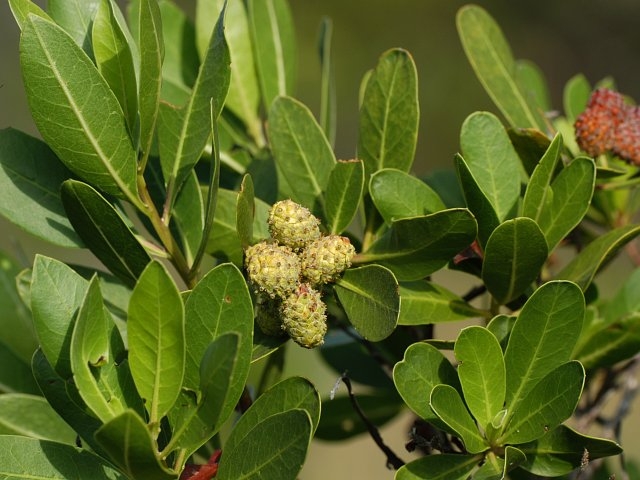Buttonwood
(Conocarpus erectus)
Buttonwood (Conocarpus erectus)
/
/

Ulf Mehlig
CC BY-SA 2.5
Image By:
Ulf Mehlig
Recorded By:
Copyright:
CC BY-SA 2.5
Copyright Notice:
Photo by: Ulf Mehlig | License Type: CC BY-SA 2.5 | License URL: https://creativecommons.org/licenses/by-sa/2.5 | Uploader: Umehlig | Publisher: Wikimedia Commons | Title: Conocarpus_erectus.jpg | Notes: == {{int:filedesc}} == {{Information |Description=Enkianthus campanulatus |Source=[https://www.flickr.com/photos/54573638@N05/7426730852/ Enkianthus campanulatus] |Date=2012-06-23 18:30 |Author=[https://www.flickr.com/people/54573638@N05 Koichi Oda] |P... |















































































Estimated Native Range
Summary
Conocarpus erectus, commonly known as Buttonwood or Button Mangrove, is an evergreen tree or shrub native to coastal areas such as mangrove swamps, tidal flats, and sandy shores in Florida, the Caribbean, Central America, northern South America, and western Africa. It typically grows as a dense, multi-trunked shrub 1–4 m (3.3–13.1 ft) tall in its shrub form but can reach heights of over 20 m (66 ft) as a tree, with a trunk diameter up to 1 m (3.3 ft). The leaves are leathery and the inconspicuous greenish-white flowers give way to button-like, cone-shaped woody fruits.
Buttonwood is valued for its high salt tolerance and is often used in coastal landscaping, erosion control, and as a windbreak. It can also be pruned into hedges or topiary forms. In cultivation, it thrives in full sun and can tolerate drought conditions, preferring soils with fast drainage. It is not particularly demanding regarding soil type, making it suitable for urban environments. However, it can become invasive outside its native range, so gardeners should consult local regulations before planting.CC BY-SA 4.0
Buttonwood is valued for its high salt tolerance and is often used in coastal landscaping, erosion control, and as a windbreak. It can also be pruned into hedges or topiary forms. In cultivation, it thrives in full sun and can tolerate drought conditions, preferring soils with fast drainage. It is not particularly demanding regarding soil type, making it suitable for urban environments. However, it can become invasive outside its native range, so gardeners should consult local regulations before planting.CC BY-SA 4.0
Plant Description
- Plant Type: Shrub, Tree
- Height: 15-20 feet
- Width: 10-20 feet
- Growth Rate: Moderate
- Flower Color: N/A
- Flowering Season: Spring, Summer, Fall, Winter
- Leaf Retention: Evergreen
Growth Requirements
- Sun: Full Sun
- Water: Medium, High
- Drainage: Medium, Slow
Common Uses
Hedges, Low Maintenance, Salt Tolerant, Street Planting, Water Garden
Natural Habitat
Coastal areas such as mangrove swamps, tidal flats, and sandy shores
Other Names
Common Names: Buttonwood , Mangue-De-Botão , Mangue-Negro , Amora-Do-Mar , Knappved
Scientific Names: Conocarpus erectus , Conocarpus erectus var. sericeus , Conocarpus erectus var. erectus , Terminalia erecta , Conocarpus erectus var. procumbens , Conocarpus procumbens , Conocarpus sericeus , Conocarpus erectus var. arboreus , Conocarpus acutifolius , Conocarpus erectus f. erectus
GBIF Accepted Name: Conocarpus erectus L.